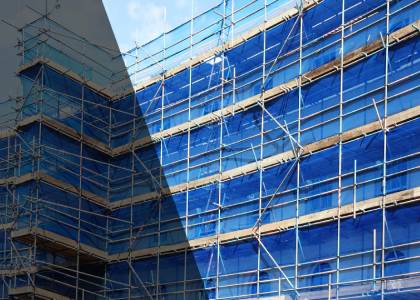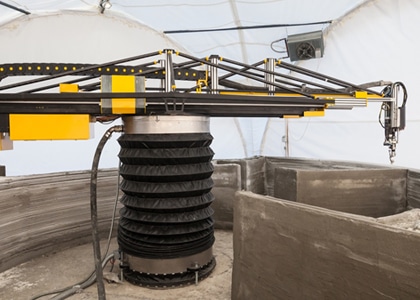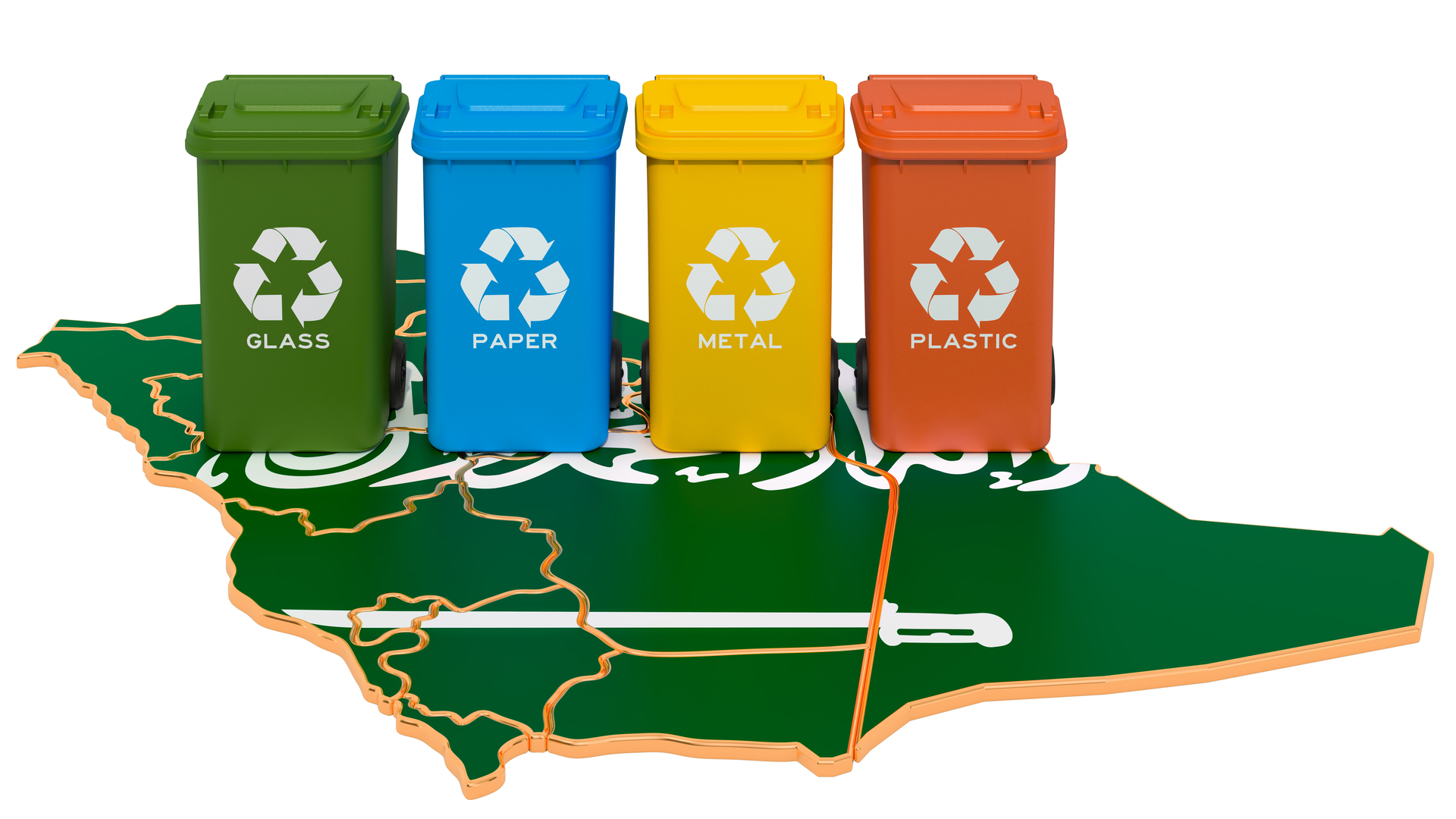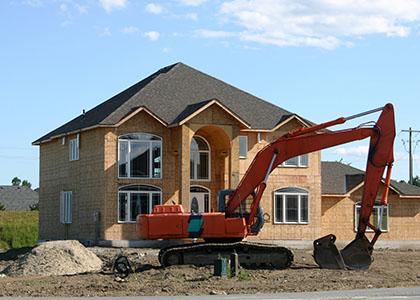Home / Blog / 4 Pros and Cons of Managing Your Own Scaffolding Requirements
Summary
Managing your own scaffolding versus outsourcing through a third-party supplier can be a difficult decision. Both options have their pros and cons.
Putting up, altering, or dismantling a temporary structure erected to support construction is specialized work and requires expertise, technical know-how, and experience. Only a person holding the appropriate scaffolding licenses and permits should manage each aspect of the process.
Outsourcing to a third-party supplier is generally considered to be a hassle-free, cheaper option where a project can benefit from the expertise, the latest materials, and specialist equipment. On the other hand, this may turn out to be an expensive proposition depending on the time and scale of a project.
A developer should consider their specific requirements before deciding. Maintaining your own in-house scaffolding could be considered an investment towards building an asset that pays off over repeat use. However, storage and maintenance, as well as developing the required expertise, are heavy costs to bear.
On average, most projects require a combination of in-house scaffolding as well as outsourced expertise and equipment. Developers are advised to weigh the pros and cons before deciding what works for them.
Index
- Building an asset
- Flexibility
- Quicker project coordination, communication, and information flow
- Mitigating subcontracting risks
Scaffolding Requirements
Most construction work cannot be undertaken without scaffolding support. Scaffolding not only facilitates easier movement across a site and ensures worker safety, in most countries, it is also required by law. Construction companies will not be granted requisite permits and certificates of clearance unless they meet all compliance rules, including installing and maintaining safe scaffolding.
While it can make sense to manage scaffolding requirements in-house to try and achieve a faster turnaround, it is critical to first assess your specific scaffolding needs against your internal capabilities.
Below, we examine the pros and cons of managing your own scaffolding in-house instead of outsourcing so that you can make an informed decision for your next project.

Pros
Different kinds of construction require specific scaffolding solutions, which depends on your project’s unique specifications.
Here are some instances where stocking and setting up your own scaffolding can work in your favor.
- Building an asset
One of the most obvious advantages of managing scaffolding in-house is the cost-benefit that comes from eliminating an outside supplier, which can include:
- Cost advantage over the length of project: For large-scaled projects with schedules longer than three months, having your own scaffolding helps save costs. Most projects use a combination of in-house scaffolding supplies and contracted suppliers to meet project needs and timelines.Subcontracted scaffolder suppliers are contracted for a short time period for specialized work, while it can sometimes, with some project, be cheaper to manage long-term requirements with in-house supplies, so long as you also have specialists who can maintain and manage the equipment.
- Scope of work: Depending on the kind of work required, using in-house equipment may be more manageable than hiring subcontractors. For example, adopting modular scaffolding for day-to-day construction and maintenance work can be handled effectively with in-house supplies.
- Reduced outsourcing costs: In-house scaffolding and formwork materials can be considered a capital investment, where repeat use pays off with long-term gains. Repeatedly renting scaffolding can add considerable fees, if you have in-house capabilities with both equipment and know-how.
- Flexibility
With in-house supplies, you will be able to react immediately to changes in scaffolding requirements, such as:
- Anticipating needs: As you will be managing orders and communicating with manufacturers yourself, you can pre-empt your own needs faster and supplement them ahead of time.
- Scaling: With in-house scaffolding, you can scale to meet your project requirements easily. With supplies at the ready, expanding or reducing scaffolding at a site is quick work. Equally, if the construction work faces weather constraints, you don’t have to wait for a supplier to enclose the scaffolding but can manage yourself if you have your own certified scaffolding specialist.
- Customization: In the infrastructure industry, scaffolding is usually customized to meet variations in design at every project location. Managing your own scaffolding means that you can order and customize it to your specific project-related needs.
- Quicker project coordination, communication, and information flow

Trying to select a scaffolding supplier requires a commitment of both time and energy, and requires:
- Assessing capabilities: To carefully assess a provider’s capabilities, you would have to review multiple companies to find one that meets your construction needs. For projects that need only a minimal amount of scaffolding work or quicker turnaround, managing your scaffolding in-house means faster processing, if you have staff capable of overseeing the scaffolding work.
- Better management across remote sites: When working at remote locations, it can be more difficult to hire a subcontractor and coordinate logistics to ship scaffolding, which sometimes adds to the costs, making it easier for a developer to manage with in-house supplies.
- Mitigating subcontracting risks: Outsourcing comes with its own risks. By managing in-house, you are more in control.
- Extra vetting: To bring on a subcontracted scaffolding supplier, you’ll want to perform your due diligence because finding out they are not qualified after signing them on means major delays for your project.The vetting process also requires research and time, which you may not have. Additionally, outsourcing may require additional procurement contracts and insurance clauses and claims, which can add to timelines, especially if things go wrong.
- Mitigating labor issues: Renting or subcontracting scaffolding suppliers means hiring materials, labor, or a combination of both. Subcontracted suppliers work on fixed timeframes. At some point, an outsourced supplier may have no choice but to ensure quick completion of your project to move on to the next customer.Having your own scaffolding supplies and teams ensures that work is done properly and to your specifications. Additionally, managing scaffolding and formwork in-house can guarantee your own team’s level of professionalism in erecting and dismantling equipment, and adherence to the strict safety standards demanded from the industry.
Cons
For large-scale, long-term projects there are many benefits to managing your own scaffolding supplies. However, with these advantages come some serious disadvantages. These include:
- Storage Issues
Scaffolding and formwork materials are bulky and take up a lot of space, which means you have to deal with:
- Volume management Before purchasing your own scaffolding, consider the volume of equipment needed and where it will be stored. If you are a first-time buyer, you may not have a good estimate of what is needed. As an expensive capital investment, you want to take good note of expected volumes to avoid waste.
- Cost analysis: Generally, it is costlier to purchase than rent scaffolding equipment, for most projects. The more equipment you need, the higher the costs of purchasing. If you need scaffolding for a large job site, it might end up costing too much.
- Storage space and accrued costs: It is difficult to meet storage needs unless you have your own warehousing to store scaffolding materials. If you have limited repeat use for scaffolding, it will depreciate while taking up precious warehousing space that could be better utilized for other equipment.
- Wasted real estate: Storing scaffolding requires an offsite location to store the equipment when the job is finished. So, in addition to the cost of purchasing equipment, you also have to factor in the cost of real estate needed for the storage and security of large scaffolding systems, which can be expensive.
- Experience
Managing your own scaffolding supplies means that you are also depending on your own technical knowledge, which may have critical gaps, including:
- Shortage of skilled staff: Before you decide to manage your own scaffolding supplies, you need to answer some critical question
- How much experience do you and your team have with scaffolding systems?
- Are you familiar with fall protection guidelines, flooring requirements, load capacities, and erecting and dismantling?
Working with scaffolding requires technical know-how, especially when it comes to specialized scaffolding. Equally, scaffolding needs regular maintenance in order to stay safe and in shape. If your company does not have the specialized teams and expertise to take care of maintenance at regular intervals, you could be endangering lives and your projects.
- Lack of quality assurance through limited experience: Professional scaffolding suppliers have years of experience and extensive relationships across multiple clients, manufacturers, builders, and contractors. They can easily identify authentic products and offer expert know-how that would otherwise be unavailable when relying exclusively on internal resources.
- Inability to access different structures: Almost every structure is unique and needs customized fabrication for scaffolding and require different approaches for access. Construction designs are different, and it is not possible to accommodate all structures with preexisting supplies in-house.

- Extra responsibility
Managing from in-house supplies means that you have to oversee multiple responsibilities, which can draw focus from your core business.
This also means that you are subject to:
- Increased liabilities: If you are considering buying scaffolding, it is essential that you are competently trained to erect and dismantle scaffolding elements. Only skilled contractors should buy scaffolding, and even then, a robust safety program must be in place.Learning how to purchase, erect and store your own scaffolding takes time. It is inadvisable to work with in-house supplies and teams if you don’t have trained staff as this will make you vulnerable to accidents, insurance liabilities, and damages claims.
- More exposure to market fluctuations

The construction industry continues to be plagued by uncertainties. Especially with the current situation, it is not uncommon for projects to suddenly come to a halt.
It would be advisable to think twice before purchasing scaffolding and formwork materials as they may be wasted if projects falter. Also, keep in mind that owning large scaffolding systems is not only an investment in equipment, but also in the manpower required to inspect, maintain, and move the materials in and out of your facility. That means purchasing your own scaffolding could leave you with:
- Depreciating assets: Whilst you own the scaffolding, it will continue to depreciate after purchase and will eventually need to be replaced, adding to costs.
- Budgeting constraints: Buying scaffolding is a huge draw on finances, whereas outsourcing scaffolding is always a more feasible option. Buying and managing your own supplies is an upfront capital expense.
Overview
While there are both pros and cons of managing with your own scaffolding supplies, usually a combination of purchase and rent makes the most sense when it comes to construction projects.
It is a good idea to purchase when:
- Scaffolding is required for multiple or ongoing projects, where the duration of work is expected to last for an extended period of time.
- There are construction projects of similar design work where the scaffolding can be used for maximum efficiency.
- You have sufficient facilities to store, and skilled staff to maintain scaffolding materials.
- You are looking to build assets for repeated use across projects.
- You have a clear calculation of your costs and profitability.
It is a good idea to rent and subcontract scaffolding when:
- You are working on a mid-sized project, with no immediate chances of repetition.
- You are pressed for time and can’t afford delays from breakdowns.
- Your company is not in a position to make a high initial investment.
- You are seeking maximum utilization of scaffolding and formwork systems through modernization and customization.
- You don’t have storage facilities and/or skilled staff to maintain the scaffolding materials.
- The construction projects use different or unique designs, and it is not possible to accommodate them with your present scaffolding stock.
Equally, you have to be able to answer the following questions objectively to determine if you have sufficient in-house experience to manage your own scaffolding needs:
- How many years of experience do you have in the construction and scaffolding industry?
- What certifications and scaffolding training courses have you completed?
- How much hands-on experience do you have with erecting and dismantling scaffolding on-site?
- How extensive is your knowledge of the proper Occupational Safety and Health Administration (or other applicable) rules and regulations for scaffolding?
For more information on scaffolding, what would work best for your project, and how you can get the support you need to ensure your construction is safe and efficient, contact the experts at SSF. A leading manufacturer of scaffolding in Saudi Arabia, we provide safe and durable structural systems for construction, renovation, and maintenance work, as well as technical and local support.












